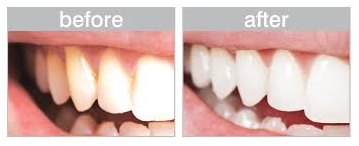Treatment Options for Stubborn Tooth Stains
The industry of cosmetic dentistry offers a variety of procedures to improve on or treat dental problems. These range from simple tooth whitening procedures to treatments for occlusion problems. Thanks to cutting-edge organization, cosmetic dental treatments are no longer unattainable. All dental treatments are cosmetic procedures by default because these improve the appearance and function ofthe teeth. If you're looking for a viable solution to your dental problem, you should first consult your dentist and consider your options. You can choose from several procedures for a dental condition like tooth staining, but bleaching is relatively inexpensive in comparison to veneers and implants. Since dental insurance doesn't cover most cosmetic treatments, you have to consider the costs of the procedure before you commit.

The treatment alternatives for tooth staining are not invasive. They can be likened to invisible braces or aligners that don’t require teeth-pulling or wearing metal brackets on the teeth. As mentioned at the onset, bleaching is the first option for surface stains since it's the least expensive. The clinics for cosmetic dentistry now offer professional bleaching as a quick-fix option for tooth stains. Conventional treatments like dental trays and at-home kits offer viable alternatives, but in-office bleaching offers the advantage of convenience and immediate results. You'll only spend an hour on a dentists clinic to remove the stains and improve your teeths hue by up to seven shades. The outpatient treatment beats month-long applications of dental trays and strips. You'll also avoid overexposures and gum irritation because professional bleaching is conducted within a proper clinical setup.
Tooth bleaching is ineffective against stains caused by medication or trauma, though. Internal stains can’t be treated with superficial procedures, and the only viable option is to cover up the enamel. The treatment alternatives for cosmetic dentistry offer resin bonding as a first restorative option. The resin application is sculpted so it covers the affected areas of the enamel. Cavities, tooth chipping, and teeth gaps are also treated with resin bonds. You can opt for porcelain inlays if you prefer a durable alternative. Resins wear down under the pressure of chewing and grinding, but porcelain inlays are resilient enough to reinforce the enamel and prevent wearing. Those desiring to become a dentist should know those things.
Porcelain jackets resolve the stain by covering the tooth’s surface with attachments. The dentist shaves enough enamel to accommodate the porcelain jacket (also called veneer), and then applies the custom attachment with bonding. If your dental problem involves enamel damage, then you should opt for tooth replacements instead. Dental crowns, implants and bridges can restore or replace teeth to maintain a pleasing appearance and a proper bite. Bonding, veneers, crowns, implants, and bridges don’t respond to teeth bleaching procedures, though. Your teeth should be bleached first so the dentist and lab technician can fabricate restorations that match its restored hue.
You don't need to learn how to become a dentist to know that you have a variety of treatment alternatives for cosmetic dentistry. Consult your dentist and weigh your options to ensure your investment on the procedure is worth the benefits.
Ronald Simmons Contact the author of the petition